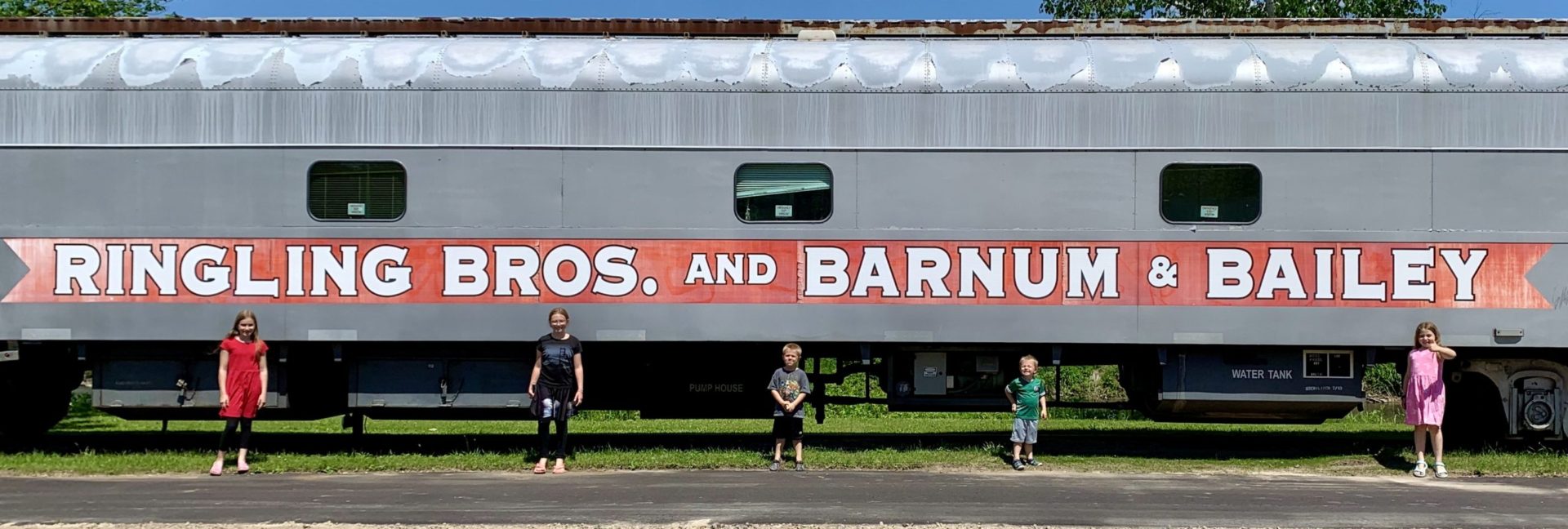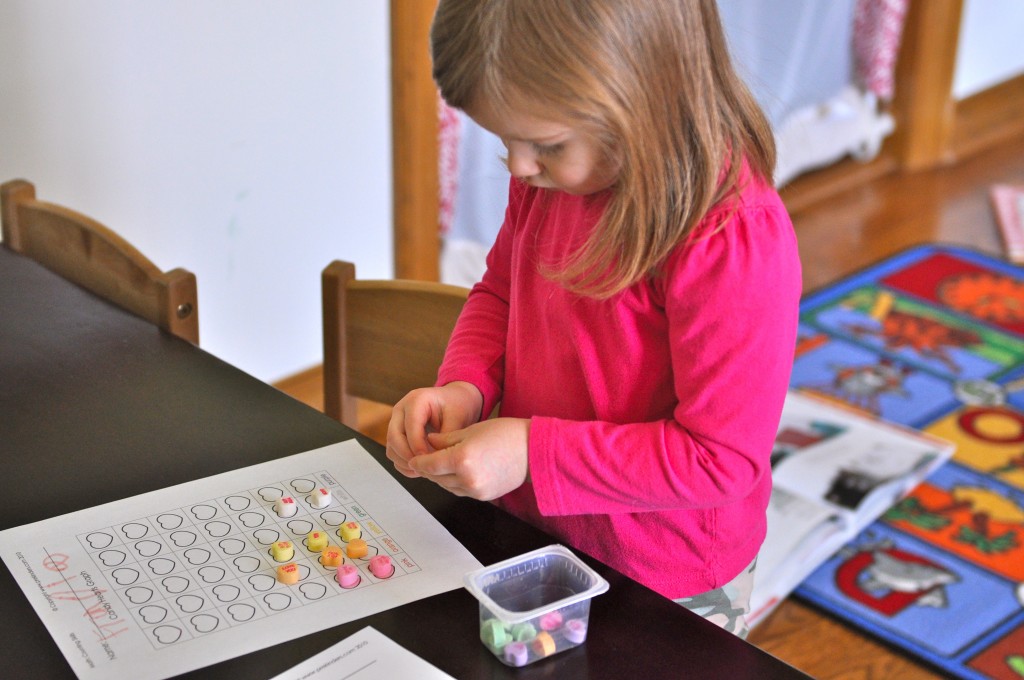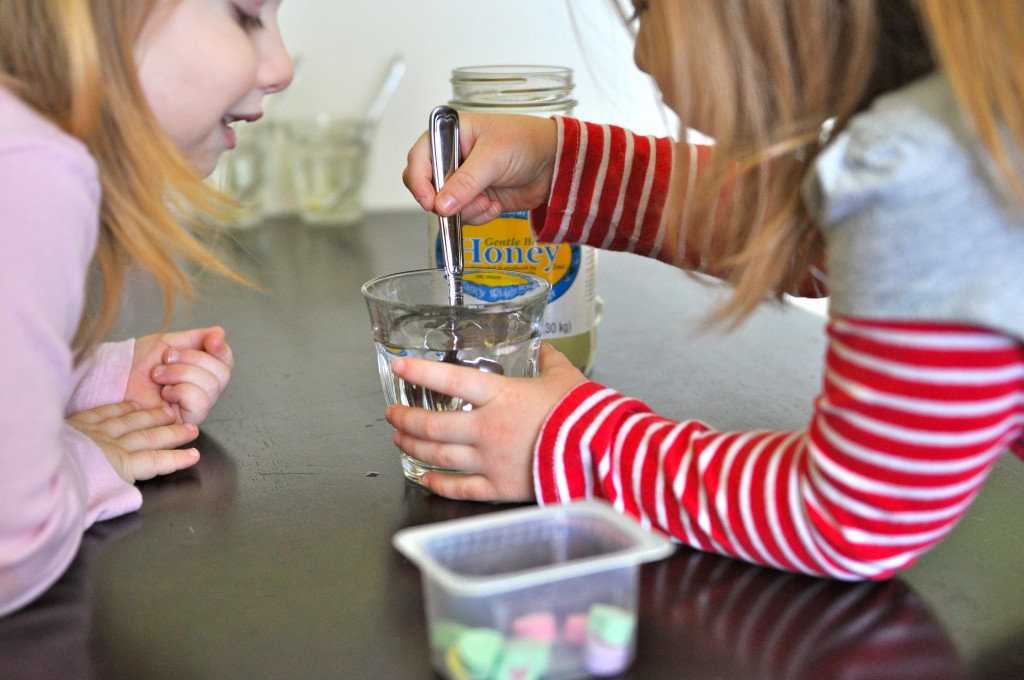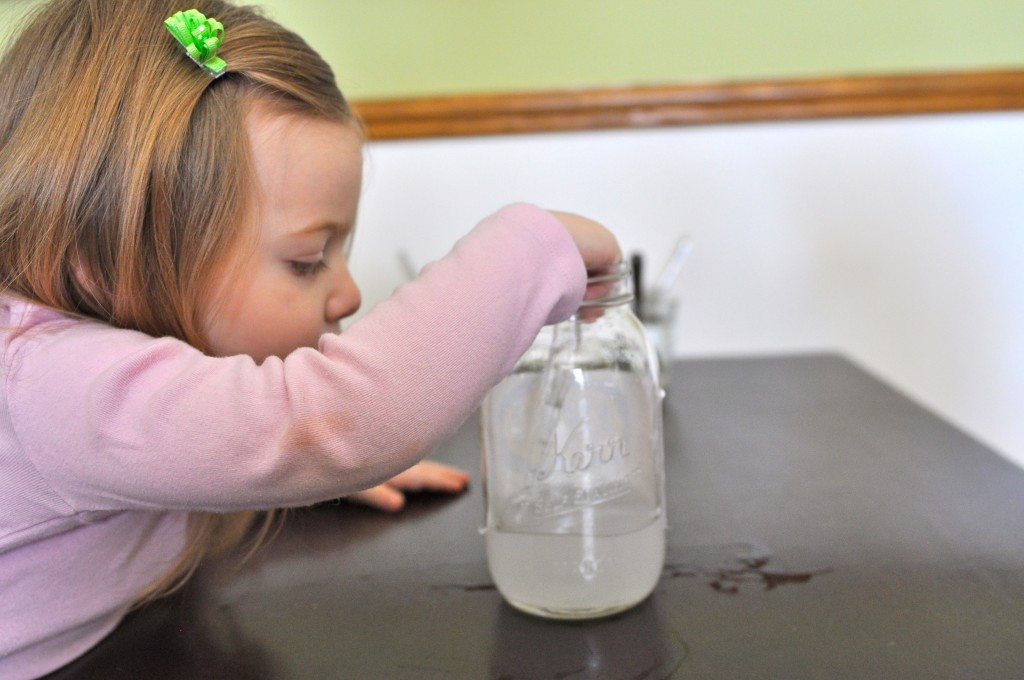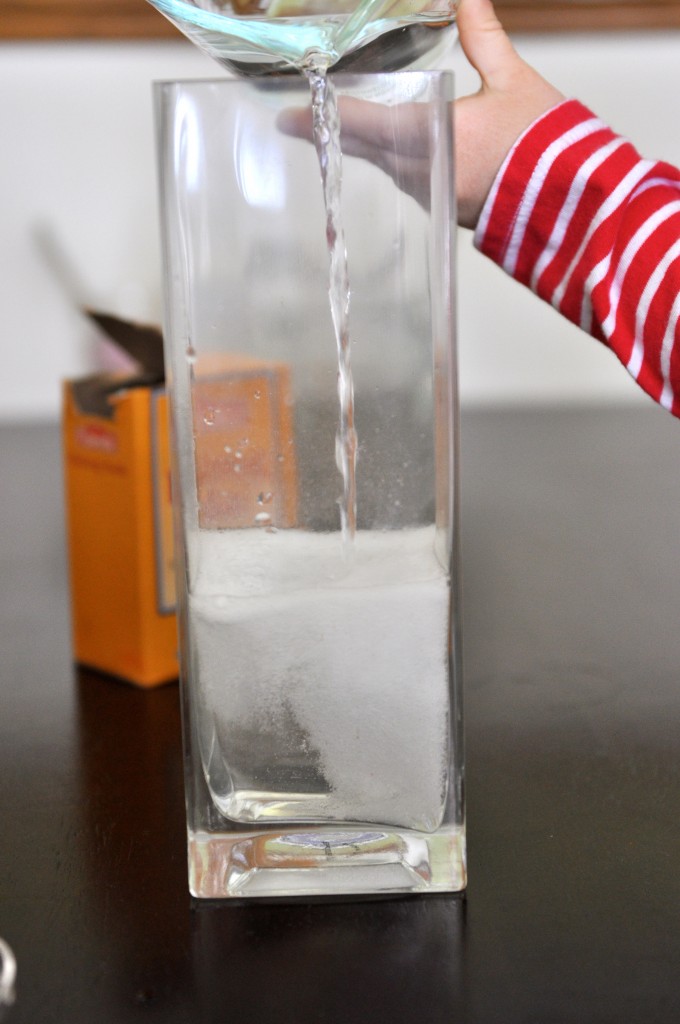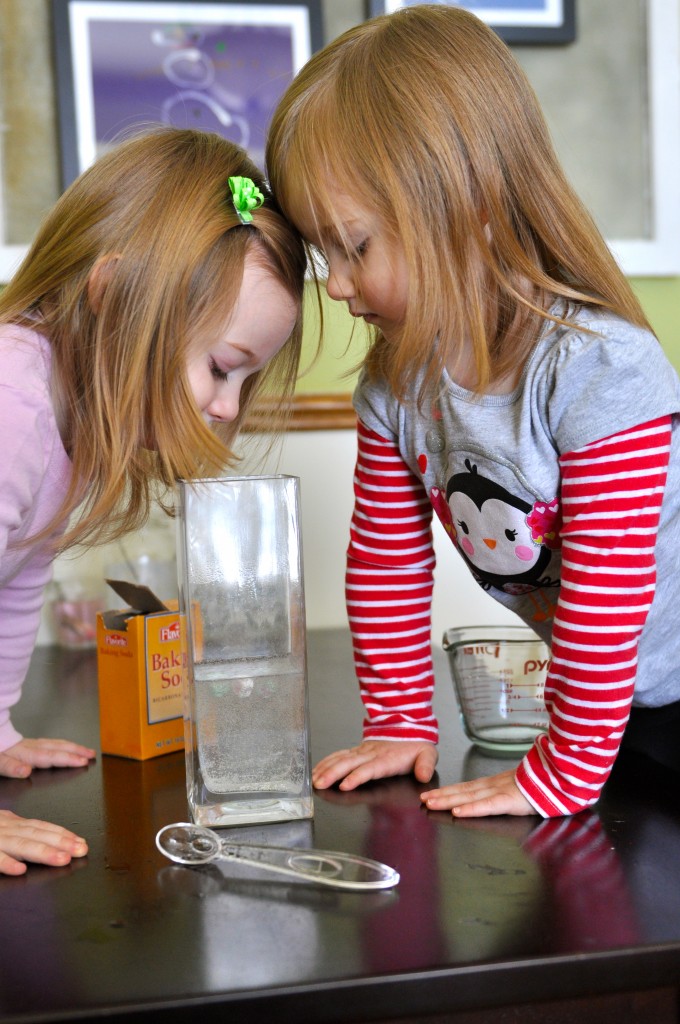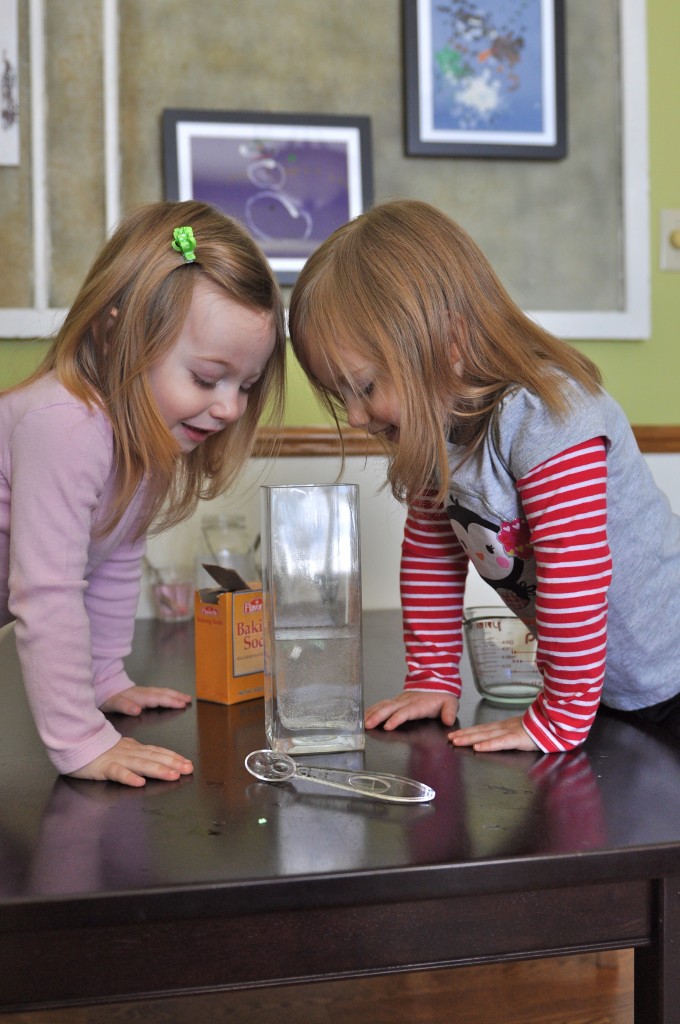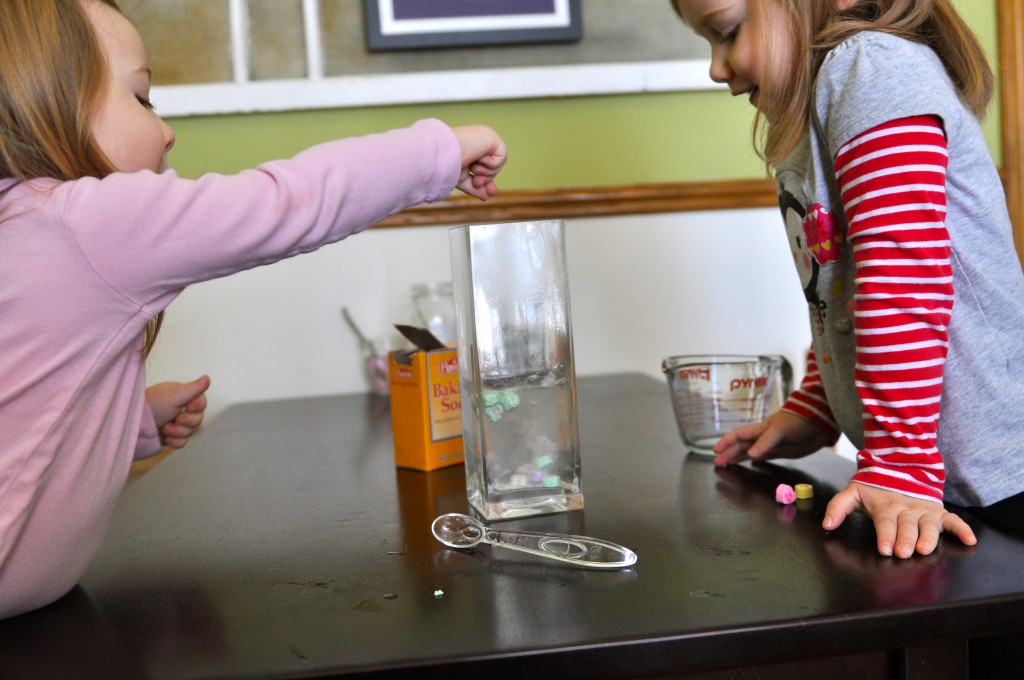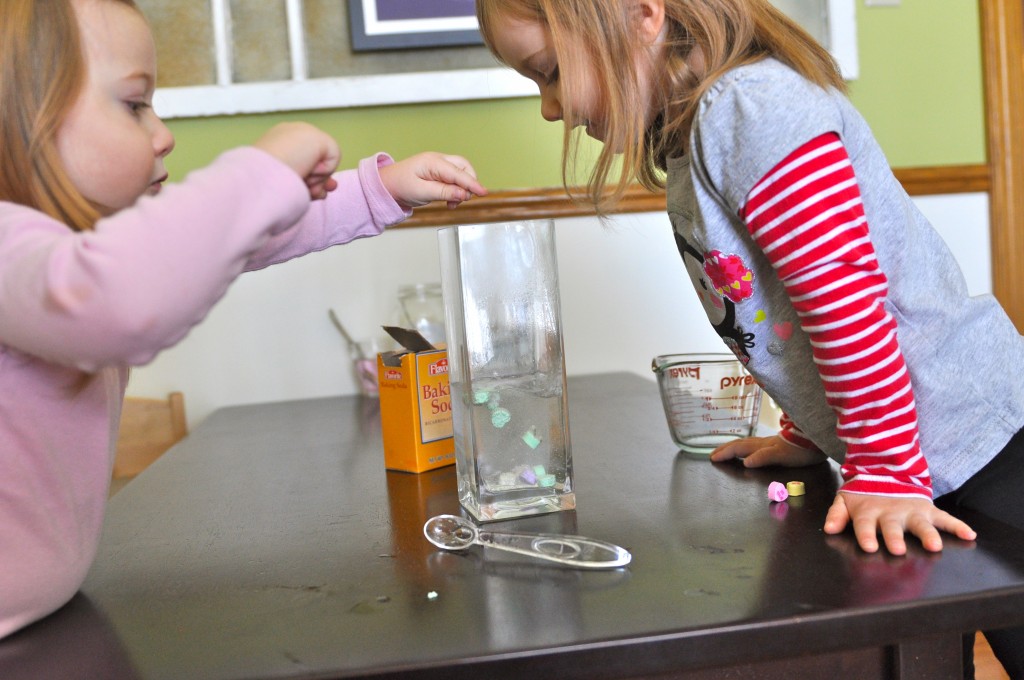Pinterest success was mine today.
Last night I pinned a link to this blog post about using Valentine’s Day candy conversation hearts for science experiments. I watched the video in the above link, and then checked out this post and this for more information.
Basically, the post was about using the conversation hearts to experiment with what would happen if putting them into different liquids/solutions.
I knew my girls would love this, even if only to have the opportunity to eat more of the hearts while doing the experiments (we ate some a few days ago when using them for counting, graphing, sorting, and they loved them).
So today, we had science class.
We started with placing the hearts in water of different temperatures. I did this slightly differently than the Mom at Inspiration Laboratory. I didn’t measure the water temperature. I just used cold, warm, and hot tap water. We dropped hearts in, stirred with spoons a bit, and watched to see what would happen. You can see the hot water on the left below. We talked about what “dissolve” means. They made the observation that the hot water was dissolving the heart fastest. They poked at the hearts, lifted them out of the water to see if the writing was still on them, and so forth. I liked using the clear glass containers and putting them against the white wall so the girls could see how the dissolving candy changed the color of the water.
Next we talked about the concept of “chemical reactions” and moved on to putting the heart in a glass of vinegar. They started by smelling the vinegar and exclaiming over its stinkiness. Lass dropped the heart in, and we observed that nothing happened. It dissolved even less than the heart in cold water. During all the time it was in the vinegar (about an hour) it never changed much at all. Bummer.
Then came the more exciting stuff. I brought out the baking soda to see what would happen if we put a heart in water that had baking soda dissolved in it. I didn’t watch the video for this particular experiment on Inspiration Laboratory, so I wasn’t sure what they found. When we put the heart in the baking soda water it almost immediately turned the water from very foggy to clear again. Interesting.
I didn’t know that that wasn’t what was supposed to happen until I was looking at this post about the experiment they did to determine which ingredient in the candy hearts caused the bubbling reaction. Bubbling reaction? Oops. After reading through her post, I quickly realized that the reason our hearts didn’t bubble in the baking soda water is that they don’t have citric acid in them. So, if you do this and you want the bubbling reaction, get hearts with citric acid. Ours are the old school Brach’s Conversation Hearts in “Classic Flavors” (I chose this particular type to match the printouts I had for the math activities mentioned above).
Anyway. All this is building up to the best parts of our experimenting. Of course I mean the combination of baking soda water and vinegar.
I have never done this trick with the girls before, so we started out just combining the two to see the reaction, without adding any hearts.
I really didn’t know just how much it would bubble up. I thought it might go over the edge of the glass a little bit. I was cool with that, since I figured that would be part of the fun. I put down a paper towel folded in half just in case.
The girls thought this was hilarious.
For the next phase of our experimenting, I got a bigger container.
We started out by mixing the baking soda in the water again. One cup of water with half of a Tablespoon of baking soda. Then we added in a couple of hearts.
Then came the vinegar (I used a half cup).
After the initial reaction, the solution continued to fizz, causing the hearts to “dance” all around in the water. They spun, they moved up and down.
It was like magic and the girls just kept watching them move. They added lots more hearts, and they all continued to spin and bob. We talked a little bit about how the bubbles were lifting them up and then popping so the hearts sank back down.
*Note – In the video I watched here of the experiment, the Mom added the vinegar before the candy hearts and hardly anything happened, at least not for a while. In her post about it here where she also has a video, she says to mix the water and baking soda, then add the candy hearts, then the vinegar. So that’s how we did it and it worked perfectly. It seems to work both ways, but I think the effect is more dramatic and interesting to add the hearts before the vinegar.
The hearts danced for quite a while. Long enough for the girls to eventually get tired of watching.
Here’s a look at our finished solutions. Left to right, hot water, warm water, cold water, vinegar, baking soda water, and baking soda/vinegar water. This was a while after the experiments were completed, and the hearts had stopped moving.
I made the mistake of dumping these out once the girls lost interest in them.
Miss was very upset when she realized I had done so.
So we’re going to do it all again tomorrow. She wants to show her Daddy anyway.
There are a few things I’ll do differently:
1. I’ll use hot, room temp, and chilled water for the temperature experiment. I’ll also use the same color heart in each of the glasses and make sure it’s one of the more vibrantly colored hearts, like pink or purple. The yellow didn’t let them see the difference in saturation of the water very well. Maybe we’ll even use a thermometer and timer this time.
2. I noticed that the one white heart we used in the experiments (I think it was in the dancing experiment) had dissolved almost completely, while the others had hardly dissolved at all, so we’ll explore this a bit more to see how the white and colored hearts might react differently.
3. I also noticed, just when posting these photos, that the hearts were all floating at the top of the baking soda/vinegar solution, even after the bubbles had stopped forming, though sitting at the bottom of the other glasses, so we’ll check this out too.
4. I’ll probably find another container so each girl can do her own baking soda/vinegar/dancing heart experiment.
I love Pinterest. And I love my new find for fun activities, Inspiration Laboratory.
